I wrote a blog about Chunsoft's Nine Hours, Nine Persons, Nine Doors back when I played it last year, and having just beaten its sequel - Virtue's Last Reward - I feel compelled to follow up on my musings with some more waxing lyrical on AI bunnies and unlikely heretofore untapped powers of the human mind in nonet form. So to that effect, here's another nine talking points about VLR and the Zero Escape series as a whole.
1. Visual Novels, Revisited
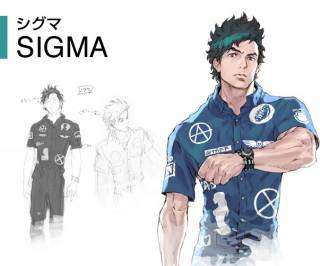
Over the past year, I can't say I've really played as many graphic adventure games as I'd have liked. My intent was to play a lot more this year, and the List of Shame I devised is packed with ringers from that particular genre. Visual novels are a type of adventure game too, in a manner of speaking, though usually more passive with a comparative lack of player interaction necessitated to further their stories. Whereas an adventure game requires that you solve a few puzzles before progressing onto the next part of the game, many visual novels simply keep on going regardless of the player's input. Conversely, visual novels are also designed with the potential for many diverging paths, with player choices - even if it's as limited as selecting one of a few possible options, like a Choose Your Own Adventure book - branching the story off in different directions.
Visual novels and the graphic adventure games of the west have always been at least aware of each other, and share a similar antecedent. The earliest Famicom adventure games, for instance, told a very linear story and included the occasional puzzle simply as a matter of course, as if they saw what text adventures were doing and simply evolved and refined the elements (the storytelling, the decisions that could potentially generate alternate paths) that appealed to them most - which is, technically speaking, also what the early Sierra graphic adventure games did, only emphasizing a different set of preferences. A recently translated GameCenter CX episode features the Famicom adventure game Oishinbo: The Ultimate Menu 3-Course Showdown, which is a perfect example of what adventure games were like in Japan at the time: though the player is running around trying to solve a puzzle ("what is the best possible meal for the situation and how would one procure its ingredients in time?"), most of this is done by simply talking and examining every hotspot in the game until the game moves forward on its own. Very rarely is the player required to make decisions and solve puzzles in a situation where they aren't simply facilitating the next part of the story. When the player is given real agency, it's a multiple choice decision that either leads to the next part of the story or a premature game over. There's no need to worry about one's inventory quite so often as a result. The NES saw a handful of Western adventure games too, the ports of Shadowgate and Maniac Mansion perhaps best known of that small group, but the divide between the two approaches to this genre was quite concrete even back in those primitive days.
The Zero Escape games feel like a combination of the two philosophies, in a similar fashion as the Ace Attorney games: there's a quite obvious distinction between when the game wants you to read/listen to a lot of text and make the occasional decision, and when it wants you to run around searching for items and using them to solve puzzles. For Zero Escape, these sequences come when you emerge into a new puzzle room and must solve its riddles before you are allowed out, at which point the game switches back to text box after text box and all the juicy plot revelations that follow. It's an interesting attempt to combine the two types of adventure game in a way that might not necessarily be to everyone's liking (I could see how someone would dislike either one of the two modes, and be dissatisfied with the whole as a result), but I tend to view it as a "best of both worlds" compromise.
Anyway, considering the only other visual novel I've played recently was that scarcely interactive Go! Go! Nippon! virtual vacation game, it's safe to say Virtue's Last Reward was phenomenal in comparison. I do intend to play more graphic adventure games and visual novels this year, however. A lot more.
2. The Puzzles
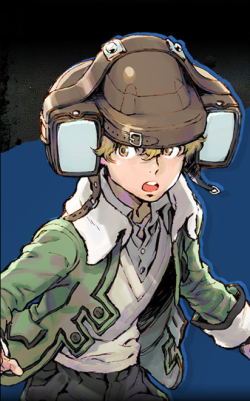
The Puzzles were definitely the weakest element of 999, and it's gratifying to see that not only have they been improved quite a bit but there's no longer any repetition; due to the way the game's branches work, there isn't a single scenario where you have to complete a previously beaten room again, unless you specifically choose to do so. The game branches in such a way that you have one in three choices for the first real puzzle room (after the tutorial puzzle, at least) and for each of those routes, another three possible rooms. All of which are unique.
In addition, the puzzles themselves seem significantly more involved, but also far less abstruse. The only truly "how the hell was I supposed to figure that out?" moments are reserved for each room's second password; an optional objective necessary to uncover some secret information about the game, its characters, its references and the science (or pseudo science, in some cases) it drops on you. I found trying to discover the "blue password" (as opposed to the green password, which is needed to escape the room and continue the game) made for some of the more fun lateral thinking exercises the game had in store.
The best part is that the game actually justifies this new system to an extent, in much the same way 999 somewhat justified all its repetitive elements. Sometimes I wonder if they introduce all this weird parapsychology stuff simply so they could have an out to deflect complaints about this slightly more problematic aspect of the game.
3. The Characters

I'd heard complaints about Clover's characterization, and they weren't kidding. She's been given the inexplicable half-nude fashion sense of any non-leading female Zero Escape character, and become considerably ditzier as a result. I sort of get what they were going at, though: her name of Clover, or Yotsuba (short for "four-leaf clover") in Japanese, has a certain connotation of having an oddball, carefree attitude. If you've ever seen that Yotsuba manga (and if you spend any amount of time on Tumblr, it feels as inevitable as DanganRonpa spoilers and Dr Who gif collages), the eponymous main character is also something of a sweet nutcase.
Of course, the biggest concern is how this Clover diverges from the shy but fiercely intelligent child of 999, who would surprise Junpei and the others with her occasional bursts of maturity and cunning. As for other characters, Alice feels as superfluous as Lotus did; a hyper-intelligent woman incongruously dressed like a Middle Eastern stripper who is only around - the game admits as much in both cases - because they're necessary to solve a single piece of the grander puzzle (or, more cynically, for some T&A).
The rest are fine though: we have two love interests in the standoffish and enigmatic Phi and the warm and maternal Luna, an elderly man Tenmyouji and his adopted grandson Quark who are involved in one of the game's more insane twists, a dubious character in a top hat named Dio who the game really wants you to buy as the villain and my favorite character, K, an amnesiac in a robotic suit who could well be anyone at any time. There's also Zero himself, who generally makes himself known to the group through his intermediary: a particularly sarcastic AI program that resembles a geisha rabbit and makes no end of bunny puns. Apparently, the punning was the localization team's solution for how Zero frequently added a rabbit-like "-usagi" suffix to its speech.
4. The Rest
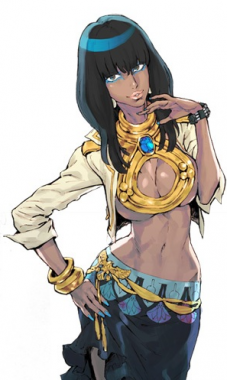
The most striking part of VLR is that there's clearly some more budget behind it. Rather than static portraits, characters now animate with some fairly decent stylized 3D models. I played the 3DS version, but I imagine the Vita version is even more impressive-looking. It does make me wonder if this extra expense didn't cause some of the worry about not being able to fund a potential sequel (see below for more thoughts on that).
I also wasn't aware that it had an English dub, since I seemed to have played through the whole game with the Japanese dub and English subtitles without realising there was an alternative. Turns out it's because the European version didn't even bother including the English dub, which seemed a little unusual. I'm sure the dub was entirely competent, but I suppose it's a matter of having different publishers and localization teams with different priorities. Weird decision, but I suppose most Europeans will be using their native language's subs to follow the story anyway, regardless of whether the audio is English or Japanese. Might as well have it so the characters' lips are syncing to the words they're saying.
5. Science and Not Science
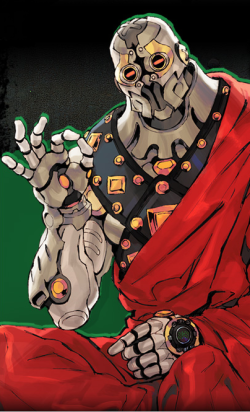
999 introduced a few paranormal theories to its narrative, some of which were relevant to the plot and others simply red herrings presumably meant to disorient you. Whenever one of these theories or thought experiments showed up, one or more of the characters would explain the basics to the protagonist, because these were real ideas (well, hypothetical science fiction concepts that had been made by real people previous to the game's inception, at least) with some degree of thought and elaboration behind them. They were never really tied in to the game's individual puzzles either, despite randomly appearing during the exploration of a new puzzle room, they just had some relevance to the game's overarching storyline.
Virtue's Last Reward does the same thing, and while it's still as weirdly jarring as ever VLR at least focuses on particular strains of crazy germane to its own outlandish story. VLR's plot is considerably stranger and more far-fetched than 999's on the whole, but at the same time keeps its internal logic more consistent. For an example of what I mean, 999 introduces the theory of Ice-9 (actually a concept devised by sci-fi writer Kurt Vonnegut based on some real-life theoretical chemistry) but doesn't do anything with it. It just kind of notes how much of a neat idea it is and lets it hang around there all detached from anything else like an awkward partygoer who doesn't know anyone else at the hootenanny. VLR makes use of everything it introduces, whether it's Schrodinger's Cat or E = MC2 or the prisoner's dilemma or a virus based on a mathematical principle that makes people want to murder themselves like in The Happening.
Point is, even though VLR is quantifiably crazier overall, it doesn't feel as wasteful with the science (real or imagined) it features. It uses everything in its kooky parapsychology toolbox to tell its story, rather than just inserting whatever its director Uchikoshi was looking up on Wikipedia that day.
6. The Bottom Line. Well, the Two-Thirds Down Line.
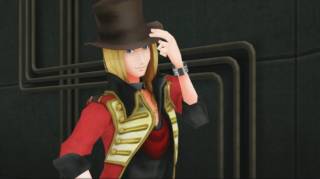
Overall, I liked VLR a lot. I don't know if I'm completely on board with where the series is going, which would be straight to Crazyville on a rocket, but the storytelling itself is as sound as ever. The series is known for creating multiple "dead end" plot threads that exist only to provide a bit more backstory for certain characters and help the player realise the wrong choices that led them to that point, and this one made for some really clever and/or emotional scenes, taking full advantage of a narrative mechanic that allows you to have two characters facing their own imminent demise to draw a lot of pathos from it. They do die, of course, but that doesn't have to be the end of the story; just rewind and try something else.
As previously stated, I'm a fan of VLR's puzzles and how they allowed for one obvious solution that let the less invested players to continue the story while also including a far trickier variant for the die-hards and puzzle savants to work out for some potentially revealing factoids. The visuals are also significantly better and the game felt really substantial for whatever reason. I'm sure I passed the 30 hour mark, which wasn't something I anticipated from a visual novel, albeit a visual novel with over a dozen "escape the room" puzzles.
I might liken the nature of the first two Zero Escape games to the first two core Assassin's Creed games: The first felt like a purer expression of what the creative lead intended, a more grounded plot and the benefit of being an entirely original IP and thus having that novelty value, but the second improved on almost every single mechanical aspect of the game's composition and felt more like the series was finally finding its legs in that sweet spot between the idealism of its creative lead and the practicality of molding that idea into a game that would be fun to play.
7. Sequel Strife

The Zero Escape series is currently facing the worrying prospect of being postponed indefinitely, which would be a general bummer enough already except for the fact that the second game has sort of re-engineered the mythology of the series to befit a trilogy in order to tie up all the loose ends and explain everything. There's a lot of unanswered questions that a hypothetical third game would presumably address, given what little we've been told about it, as well as being an effective bridge between the events of two previous games. The fact that the third game doesn't appear likely, even with this eleventh hour quest from the internet to save it, is something of a downer, but at the same time, it's equally unfortunate that the second game's story decided to rely so heavily on needing a subsequent entry to fully explicate on everything, because that just seems like a very flippant way of convincing the people behind the funding that a third game would be a necessity; a bluff that was unfortunately called by the publishers and producers of the series.
Still, it's not like campaigns like this haven't worked in the past. Operation Rainfall was a rousing success, and Kickstarter and Indie Gogo have helped a lot of games get off the ground, so there's precedents aplenty. I'll remain optimistic that something will come along last minute and save Zero Escape 3 and whatever goofy subtitle they decide to go with this time. Hopefully it won't have to involve teleporting one's consciousness back in time and finding a way to make the previous games more lucrative.
8. Spoiler Space!
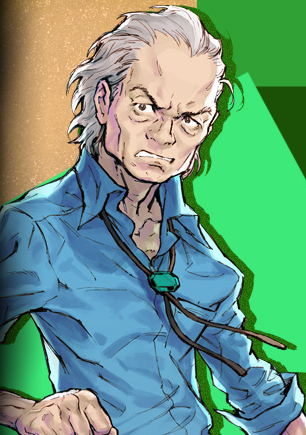
Here we discuss the game's plot in detail, its ending and its various twists. Just scroll right past unless you've already beaten the game, and likewise try not to fill the comments with spoilerish stuff either.
So... the moon, huh? And they explained the lack of gravity with the effects of the Radical-6 virus. Doesn't really explain why people occasionally went into slow-motion mode regardless, like Quark or Sigma on one of the "everybody dies" threads, or how Luna and the various recordings weren't all sped up (unless they were all configured specifically to run slowly so people could follow them) or why everyone killed themselves in one of the grislier endings (including Luna!) if they're all already infected. It also raises some questions about how Dio managed to sneak into a moon base, or why Akane and Zero expected Tennmyouji to keep his trap shut about their extraterrestrial location.
Talking of whom, I thought it was a little nuts the guy was actually Junpei, and had been living under an assumed name in the post-apocalpytic Earth salvaging from the decaying remains of civilization like one of those surly Russians from the Metro series. At least root beer floats apparently survived? I'm guessing he sort of gave up on chasing Akane around the world when it became difficult just to survive.
Then there's K, who is apparently Sigma's clone and "spare", presumably created with the same technology that allowed Dio and the other Myrmidons to exist. K's face-concealing armor is explained to be a heavy exosuit that allows him to develop bones and muscles normally on the Moon, though this would suggest that he would be even more sluggish if he was under the additional effect of Radical-6 (and he'd have to be for the ploy to work, or he'd be fast-talkin' like some 1930s journalist).
There's also the matter of Phi, who remains a mystery going into the third game; a deliberate decision by the series's director. Some wild theories abound, but my favorite is the idea that she's an alternate universe Santa who just so happened to be female in that particular branch. As the person who seemingly has the most knowledge of quantum mechanics, and is usually the one explaining it all to Sigma, she did emphasize at one point that the events that split reality into alternate timelines don't have to be human decisions but could just be events that happen at the atomic level. That suggests to me that she's aware that she might be the result of an errant chromosome deciding to be an X instead of a Y during her conception, and is either the Santa from another universe who found a way to cross over to help Akane or is and always has been the Santa from VLR's reality; in which case, VLR is set in an alternate universe to 999. I suppose the reason why this theory all ties together so soundly in my mind, and perhaps an unfortunate coincidence for the director of the series hoping to make it a big shocking reveal, is because Bioshock Infinite already explored the idea with the Luteces. Huh, maybe I should've marked this for Bioshock Infinite spoilers too. How do you do a spoiler tag within a spoiler tag?
I'd talk about the super secret ending, in which Kyle/K is apparently taken over by an additional unknown character which seems to exist simply to set up the next game, but it seems kind of pointless without having the necessary context to understand it. I'm guessing this character is perhaps another version of Sigma who is involved with that Mars base Nonary Game that the game alludes to several times, or perhaps that super meta suggestion people have made about it being the player themselves, but there's no way to know for sure. Secrets! Who needs 'em? I mean, besides this series?
9. The Future
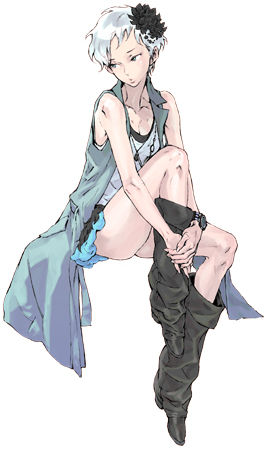
So what else do I want to cover in the future? I still have Last Window and Another Code: R, the few remaining CING games I've yet to discover (well, there's also Again, but that seemed a bit too overwrought for its good from that QL Vinny and Ryan did). I've been meaning to catch up with the new Phoenix Wright game, especially with that Layton crossover already out over here. Speaking of whom, it might be getting close to my annual Layton adventure. I believe the Last Specter might be next.
There's also all the adventure games I keep picking up from Steam: Edna and Harvey, The Whispered World, The Book of Unwritten Tales, Wadjet Eye's Gemini Rue and Primordia, Pendulo's The Next Big Thing and too many Telltale episodic games than I can recall. I gotta find time for some of these, this pile's getting ridiculous. Anyway, whenever that time arrives, I'll let you all know with some more loquacious ramblings. Until then, keep on pointing and clicking.
Log in to comment